| 1 |
KINZINGER G S M, HOURFAR J, LISSON J A. Efficiency of the skeletonized PendulumK appliance for non-compliance maxillary molar distalization: Aclinical pilot study[J]. Fortschritte Der Kieferorthopadie, 2021, 82(6): 391-402.
|
| 2 |
牟 兰, 韩耀辉, 葛振林. 推下颌磨牙远移技术矫治安氏Ⅲ类错 畸形的研究现状[J]. 现代口腔医学杂志, 2015, 29(1): 52-55. 畸形的研究现状[J]. 现代口腔医学杂志, 2015, 29(1): 52-55.
|
| 3 |
INCHINGOLO A D, PATANO A, COLOCCIA G, et al. Treatment of class Ⅲ malocclusion and anterior crossbite with aligners: a case report[J]. Medicina, 2022, 58(5): 603.
|
| 4 |
ALNEFAIE M, HAN W J, AHN Y S, et al. Orthopedic and nonsurgical orthodontic treatment of adolescent skeletal class Ⅲ malocclusion using bone-anchored maxillary protraction and temporary anchorage devices: a case report[J]. Children, 2022, 9(5): 683.
|
| 5 |
韩 婕, 陈学鹏, 周 益. 暂时性骨支抗装置推下颌磨牙远移的研究进展[J]. 医学综述, 2021, 27(6): 1141-1145.
|
| 6 |
ALOSMAN H S, BAYOME M, VAHDETTIN L. A 3D finite element analysis of maxillary molar distalization using unilateral zygoma gear and asymmetric headgear[J].Orthod Craniofac Res,2021,24(2):261-267.
|
| 7 |
LONGERICH U J J, THURAU M, GRILL F, et al. Does molar distalization by the Beneslider have skeletal and dental impacts? A prospective 3D analysis[J]. Oral Surg Oral Med Oral Pathol Oral Radiol, 2022, 134(1): 36-48.
|
| 8 |
JIA L R, WANG C J, WANG C, et al. Efficacy of various multi-layers of orthodontic clear aligners: a simulated study[J]. Comput Methods Biomech Biomed Engin, 2022, 25(15): 1710-1721.
|
| 9 |
SEO J H, EGHAN-ACQUAH E, KIM M S, et al. Comparative analysis of stress in the periodontal ligament and center of rotation in the tooth after orthodontic treatment depending on clear aligner thickness-finite element analysis study[J]. Materials, 2021, 14(2): 324.
|
| 10 |
JIANG T, WU R Y, WANG J K, et al. Clear aligners for maxillary anterior en masse retraction: a 3D finite element study[J]. Sci Rep, 2020, 10(1): 10156.
|
| 11 |
AHMED T, PADMANABHAN S, POTTIPALLI SATHYANARAYANA H. Effects of varying attachment positions on palatal displacement of maxillary incisors with clear aligner therapy: A three-dimensional finite element analysis[J]. Fortschritte Der Kieferorthopadie, 2023, 84(3): 178-188.
|
| 12 |
HONG K, KIM W H, EGHAN-ACQUAH E, et al. Efficient design of a clear aligner attachment to induce bodily tooth movement in orthodontic treatment using finite element analysis[J].Materials,2021,14(17):4926.
|
| 13 |
吴冬雪, 赵云山, 马 萌, 等. 无托槽隐形矫治器远移下颌磨牙的疗效[J].中南大学学报(医学版), 2021, 46(10): 1114-1121.
|
| 14 |
陈梦薇. 微种植体支抗辅助透明矫治器远移下颌磨牙的三维测量分析[D]. 福州: 福建医科大学, 2021.
|
| 15 |
范星星, 柯 杰, 赵桂芝, 等. 微种植体支抗远移下颌磨牙的生物力学研究[J]. 牙体牙髓牙周病学杂志, 2014, 24(4): 221-225.
|
| 16 |
FAN Z, ZHANG Q, JIANG Y J, et al. Mandibular retromolar space in adults with different sagittal skeletal patterns[J]. Angle Orthod, 2022, 92(5): 606-612.
|
| 17 |
范星星, 赵桂芝, 柯 杰. 下颌第二磨牙远中移动的研究进展[J]. 北京口腔医学, 2014, 22(2): 119-120.
|
| 18 |
魏 惺, 赵立星, 许桢睿, 等. 关于中国人正畸支抗用微种植钉牙槽骨植入安全区的研究[J]. 国际口腔医学杂志, 2010, 37(2): 128-132.
|
| 19 |
买买提·吐地, 哈尼克孜·莫明, 麦合布拜木·吐儿逊. 下颌颊棚区微螺钉解剖学植入区域位点锥形束CT测量分析[J]. 中国口腔颌面外科杂志, 2020, 18(1): 38-41.
|
| 20 |
WANG Y Q, SUN J, SHI Y L, et al. Buccal bone thickness of posterior mandible for microscrews implantation in molar distalization[J]. Anat Anzeiger, 2022, 244: 151993.
|
| 21 |
CHOI Y T, KIM Y J, YANG K S, et al. Bone availability for mandibular molar distalization in adults with mandibular prognathism[J]. Angle Orthod, 2018, 88(1): 52-57.
|
| 22 |
郭学强, 刘新强, 王 铮, 等. 成人下颌磨牙后间隙与第三磨牙关系的三维研究[J]. 中华口腔正畸学杂志, 2021, 28(2): 74-79.
|
 )
)
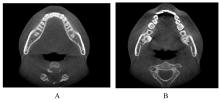

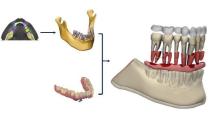





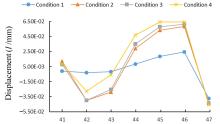

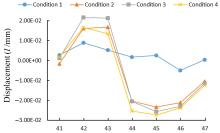

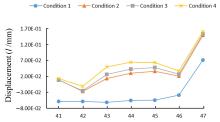

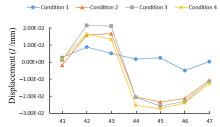

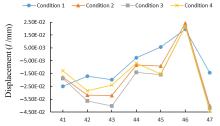

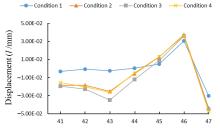

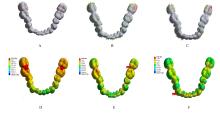

 畸形的研究现状[J]. 现代口腔医学杂志, 2015, 29(1): 52-55.
畸形的研究现状[J]. 现代口腔医学杂志, 2015, 29(1): 52-55.


